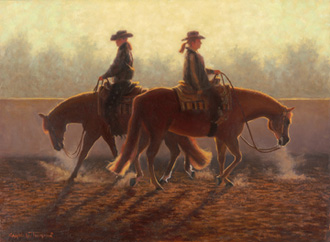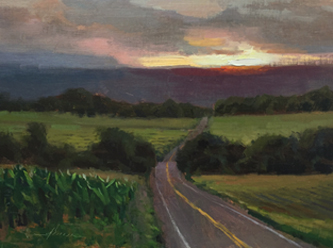How is it possible to break artistic rules and still create a great painting? That question has led to a compelling group exhibition for both the eyes and mind.
“Over the years,” writes McBride Gallery owner Cynthia McBride, “I have heard artists comment that a painting just delivered to the gallery ‘may have broken the rules’ but, ‘it’s one of my favorites!’ These are the same artists who teach workshops, instructing painters in the long-standing traditions for a well-designed composition. It made me curious.” The results? A fascinating group exhibition titled “Breaking the Rules.”

Opened on April 2, “Breaking the Rules” features several works that have used — and compensated for — “errors” in such traditional design principles as balance, harmony, and the rule of thirds, among others. Represented artists include Valerie Craig, Howard Eberle, Charlie Hunter, Abigail McBride, Terry Miller, Larry Moore, Jason Sacran, John Brandon Sills, and Carol Lee Thompson.
To learn more, visit McBride Gallery.
This article was featured in Fine Art Today, a weekly e-newsletter from Fine Art Connoisseur magazine. To start receiving Fine Art Today for free, click here.








